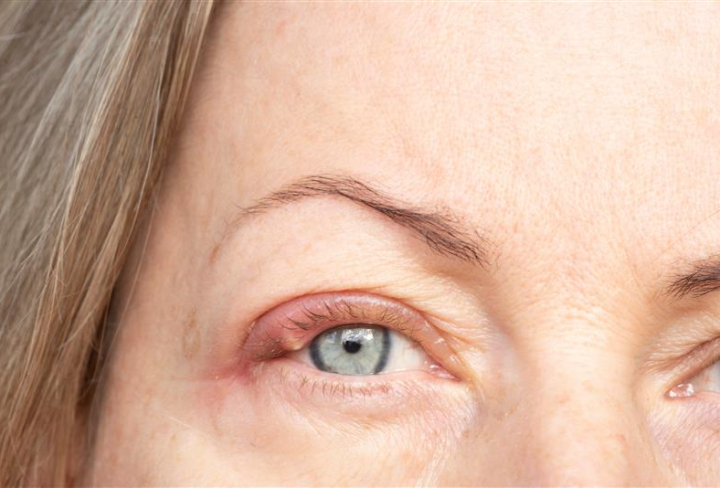Understanding Styes
A stye is like a small boil or pimple. It appears on your eyelid and can be pretty painful. Styes often look like a tender, red bump. You may find them on the outside of the eyelid. But sometimes, they occur on the inside. When they are on the outside, they are called external styes. Styes that form on the inside are internal styes and can be a bit more uncomfortable.
Knowing the difference between external and internal styes is crucial. External styes usually show up near the base of your eyelash. They are easy to spot when you look in the mirror. Internal styes, on the other hand, form within the eyelid and might not be visible right away. Both types result from infection but affect different parts of your eyelid. Understanding these differences helps decide the appropriate treatment and ensure timely relief.
Causes and Risk Factors of Styes
The main reason for a stye is a bacterial infection. Suppose tiny oil glands lining your eyelids become blocked. In that case, bacteria can grow and cause a stye. These glands keep your eyes moist, but they can sometimes get clogged. This blocked oil is one of the primary eye stye causes.
Several factors can increase the risk of developing a stye. Styes are more common in people who touch their eyes frequently with unclean hands. If you do not wash your makeup tools regularly, that can also raise your risk of getting a stye. Additionally, living a stressed lifestyle and poor nutrition can weaken your immune system, making you more prone to infections, including styes.
Recognizing Stye Symptoms
Common stye symptoms include redness and swelling of the eyelid. If you feel pain or tenderness around your eye, you might have a stye. Sometimes, your eye might tear up more than usual, or you may notice a little yellow spot that resembles a small pimple.
It’s essential to know how stye symptoms differ from other eye issues. For instance, a chalazion can also cause a lump but is usually not painful like a stye. Understanding these differences ensures proper care. If your eyelid problem isn’t going away, consider seeing a healthcare professional. They can help differentiate between a stye and other conditions.
Preventive Measures Against Styes
Preventing styes starts with good eye hygiene. Washing your hands before touching your face and eyes is crucial. Always clean your contact lenses as per instructions and avoid using expired makeup products.
Here are some tips to help prevent styes:
- Keep Clean: Always wash your face daily and remove makeup before bed.
- Eye-Friendly Diet: Include carrots and leafy greens in your meals.
- Frequent Breaks: Rest from screens to decrease eye strain.
- Avoid Sharing: Do not share makeup tools with others.
By following these tips, you can reduce the chances of getting a stye. These preventive steps ensure your eyes remain healthy and irritation-free.
Effective Treatment Options for Styes
One of the most effective stye treatment methods is using a warm compress. A warm compress helps in easing the discomfort and can speed up the healing process. Simply soak a clean cloth in warm water and place it gently over your closed eye for about 10 minutes, several times a day.
For managing stye pain and discomfort, over-the-counter pain relievers can be beneficial. Avoid wearing eye makeup and contact lenses until the stye has healed. Keeping your eyes clean is essential for proper healing of styes and reducing their recurrence.
When to Seek Medical Attention
While many styes clear up on their own, some might need extra care. If a stye doesn’t improve within a week or if it affects your vision, it’s time to see a doctor.
Medical professionals can offer treatments like antibiotic ointments or drainage. They can provide advice when home remedies aren’t working. Prompt medical intervention can prevent complications and ensure a quick recovery from stye symptoms.
Duration and Prognosis of a Stye
A stye usually heals in about one to two weeks. However, if it’s stubborn, it might take a little longer. Most see improvement in stye symptoms within a few days with proper care.
Some factors can affect how long a stye lasts, like keeping the area clean and avoiding irritants. Patience is crucial, as forcing the stye to pop can lead to more problems.
Unattended Styes: Potential Complications
Ignoring a stye can lead to further infection and complications. Sometimes, a stye can turn into a chalazion, which is a larger, more firm bump.
Regular eye check-ups can prevent these issues. If you feel unsure about the stye or its healing process, it’s always best to consult with a healthcare professional to prevent worsening conditions.
Understanding styes and how to manage them can make a big difference. By recognizing the symptoms and knowing the right treatments and preventive measures, you can ensure your eyes remain healthy and comfortable.

